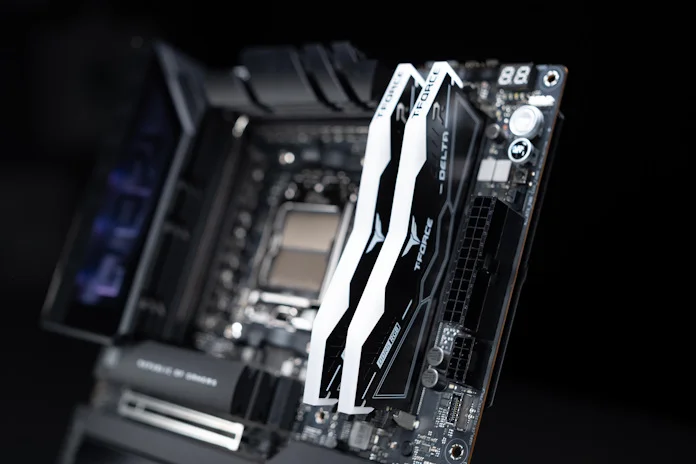DDR5 memory brought many welcome upgrades over last-gen DDR4. Built with better scaling for today’s multi-threaded CPUs, plentiful bandwidth, and a massive efficiency boost, DDR5 is the preferred choice for today’s PC builders. Today, memory manufacturers are pushing the limits of what’s possible with kits ranging up to DDR5-8000 or even higher. To give you the best experience with these cutting-edge memory kits, we’re introducing an all-new slot design that’s built from the ground up for enhanced performance and durability: NitroPath DRAM Technology.
Unmatched performance
Our first motherboards to feature NitroPath DRAM Technology come from our X870E motherboard lineup: the ROG Crosshair X870E Hero and ROG Strix X870E-E Gaming WiFi. Now that these boards are available for you to purchase— and now that we’ve shared the details on Z890 motherboards which also include the feature — we’re able to reveal even more information about how this technology works.

The short explanation remains the same. NitroPath DRAM Technology boosts memory speeds through a reworking of the venerable DRAM slot. Our cutting-edge design improves signal quality, increasing DRAM overclocking performance by up to 400 MT/s depending on factors like memory speed, module, and system configuration. Simultaneously, slot retention force is enhanced by 57%, making these new slots better prepared to withstand the wear-and-tear of the RAM installation process than traditional slot designs. For enthusiasts who are likely to upgrade or replace their memory over time, that’s a welcome bonus.
Snubbing longer stubs
For a more detailed explanation, we’ll have to venture into just a bit of electrical engineering. Modern DIMMs have a 288-pin design, meaning that there are 288 “gold finger” pads on the DIMM that need to make contact with 288 pins in the DRAM slot. Since these parallel traces are tightly packed, careful work has to be done to minimize signal reflection and crosstalk so that you can enjoy stable performance. To enable high-performance memory kits to reach dazzling speeds, we employ a wide range of strategies, including carefully selected PCB materials, optimized trace routing, and precision soldering.
The challenges relating to signal interference become increasingly prominent when running bleeding-edge memory kits at ultra-high frequencies. While working with the latest memory kits from our partners, we discovered that one element of the conventional DRAM slot was limiting our ability to push ever-higher memory speeds: the pin design.
In conventional DRAM slots, each pin has a “stub” that extends up and away from the point where the pin makes contact with the gold finger on the DIMM. This stub protects your memory module by ensuring that you’re not scratching up the gold fingers by inserting them against the sharp end of a metal trace. But these stubs also cause signal reflection. At baseline DDR5 speeds, the reflection caused by these stubs is manageable, but when you’re pushing memory speeds north of DDR5-8000, it increasingly becomes a barrier to stable operation.
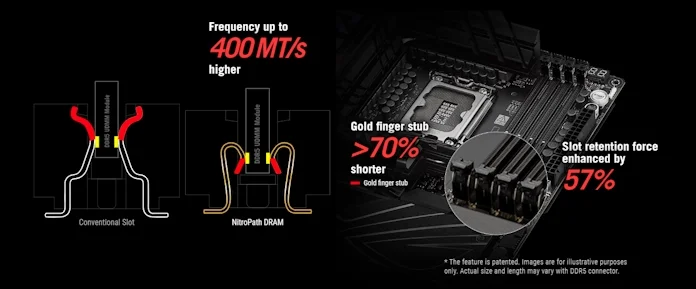
NitroPath DRAM Technology takes a new approach to the pin layout — and notably, it works without requiring a new type of DIMM. Rather than having the pins extend up and away from the DIMM, we fold the pins inward. This lets us decrease the length of the stubs by roughly 70% while still ensuring that a sharp edge doesn’t come in contact with the gold fingers. The inward fold also helps improve slot retention force to ensure a snug, firm connection between the pins and the gold fingers.
Our internal testing indicates that NitroPath DRAM Technology offers the biggest impact on our motherboards with four DIMM slots. Options with two DIMM slots, notably the ROG Maximus Z890 Apex, already offer excellent memory performance with high-end kits, so they don’t show enough benefit from the new slot design to justify its inclusion.
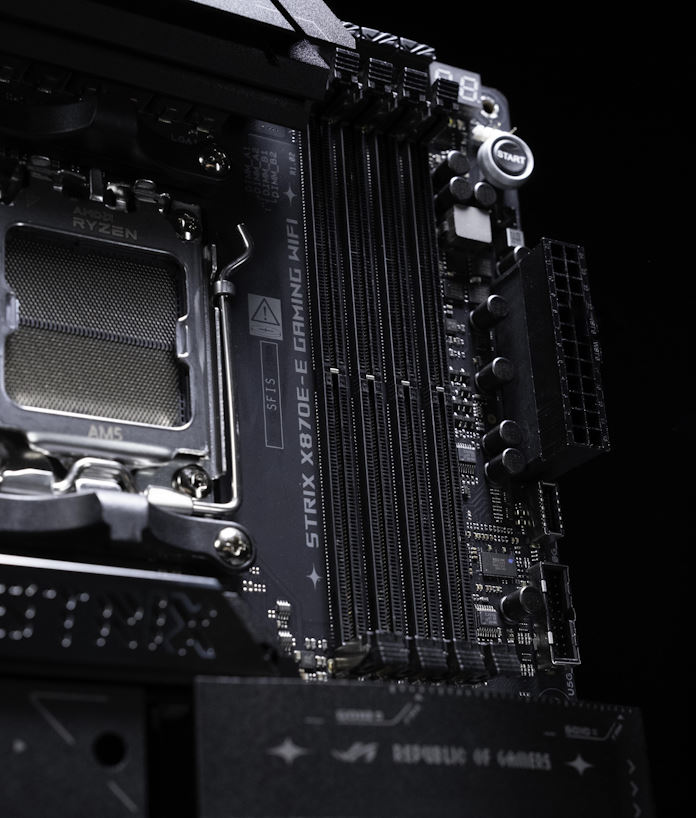
Smoother signal transmission with less noise and reflection translates to an overall improved experience with high-end memory kits. In our testing, we’ve found that this new DRAM slot design can increase DRAM overclocking performance by up to 400MT/s, depending on a variety of factors. With NitroPath DRAM Technology, you’ll be better able to push the overclocking limits of your DDR5 RAM — and enjoy enhanced system stability, even under heavy loads.
Finding calm in the eye of the storm
A quick look at a set of simulated eye diagrams helps visualize the impact of using NitroPath DRAM Technology with high-end DDR5 kits. This first diagram shows the signal integrity of a memory kit operating at 6400MT/s, with and without the slot design.
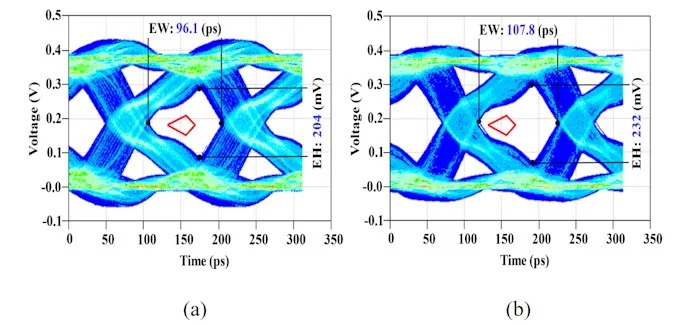
In both memory installation configurations, there’s a large open “eye” at the center of diagram, indicating minimal signal distortion. That’s true for both the old conventional slot design and for the new NitroPath DRAM Technology.
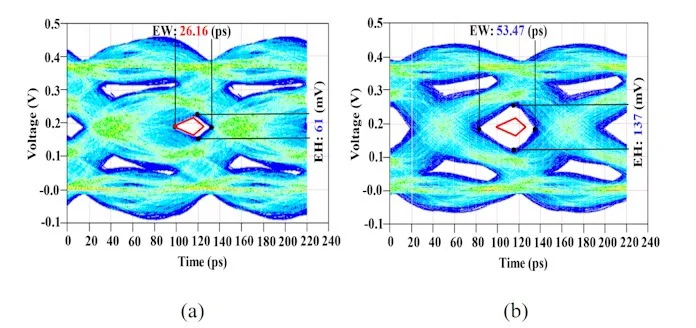
Look at what happens when we dial up the memory speeds, though. At 8600MT/s, the eye is much more open on the test runs that use the new connector.
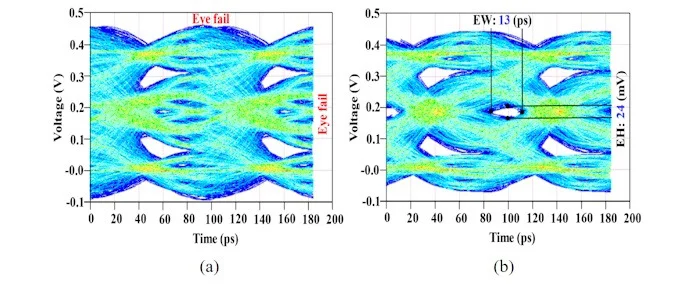
Finally, we’ll tantalize the memory enthusiasts out there with a peek at what happens when we venture into the frontier of memory performance. When we crank the speed all the way up to 10000MT/s using the old DRAM slot design, the eye completely disappears. Running this configuration would almost certainly result in errors and overlapping signals, and the system may not even boot at all.
With NitroPath DRAM Technology, there’s still a visible eye. It’s smaller, indicating that it would likely take some finessing to keep memory performance stable at these speeds, but it’s at least possible — and that’s rather exciting, considering that we’re talking about DDR5-10000 here.
Reinforced for a longer lifespan
In addition to greater memory performance potential, NitroPath DRAM Technology offers enhanced slot retention force, too. These reinforced DRAM slots are better prepared to withstand the wear-and-tear of the RAM installation process than traditional slot designs, making them a better choice for enthusiasts who are likely to upgrade or replace their memory over time.
| DDR5 DRAM Latch Lateral Force (Latching) | ||
|---|---|---|
| Traditional Slot | NitroPath DRAM Slot | Improvement |
| 6.23 kgf | 7.46kgf | 20% |
| DDR5 DRAM Latch Lateral Force (Release) | ||
| Traditional Slot | NitroPath DRAM Slot | Improvement |
| 3.88 kgf | 4.84 kgf | 25% |
| DDR5 DRAM Slot Retention Force | ||
| Traditional Slot | NitroPath DRAM Slot | Improvement |
| 4.72 kgf | 7.42 kgf | 57% |
Improved lateral force resistance and sidewall strength give you the confidence that your investment is ready to go the distance.
Built for gamers
In the world of competitive gaming, every advantage counts. Gaming enthusiasts pursuing the very highest FPS rely on fully optimized systems that break down every performance-limiting bottleneck. With NitroPath DRAM Technology, we’re able to offer these gamers next-level memory performance and stability so that they’re able to fully unleash the fastest DDR5 memory kits on the market today.
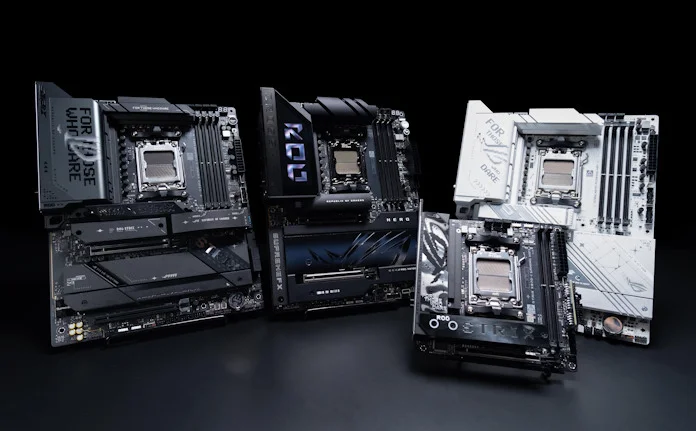
NitroPath DRAM Technology debuts on two of our latest X870E motherboards: the ROG Crosshair X870E Hero and the ROG Strix X870E-E Gaming WiFi. Click here to learn more about these revolutionary motherboards and to meet the rest of the ASUS X870E/X870 motherboard family.

For those who prefer Intel CPUs, we offer NitroPath DRAM technology in the ROG Maximus Z890 Extreme, ROG Maximus Z890 Hero, and ROG Strix Z890-E Gaming WiFi. Click here for more information on these motherboards and the other models in our Z890 lineup.

